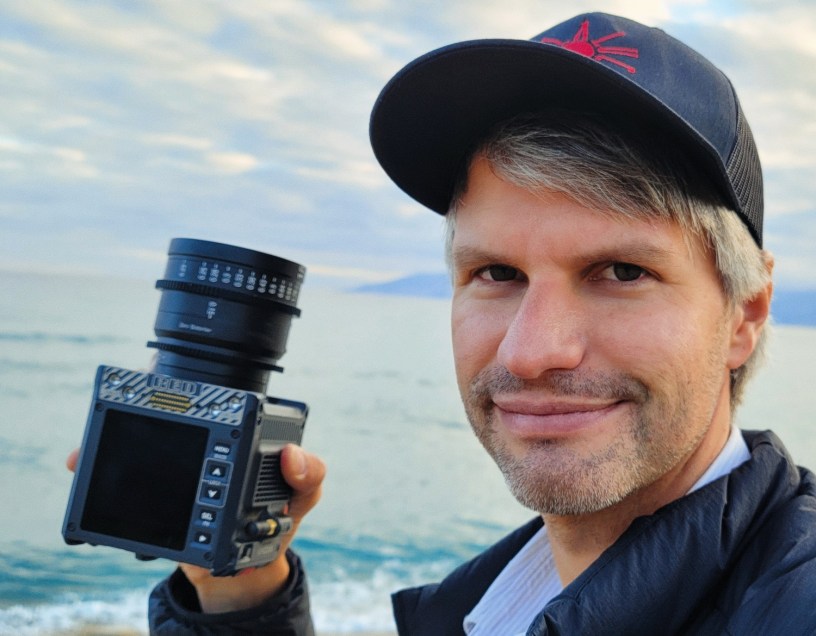After trialing the RED KOMODO on Rawson Marshall Thurber’s Red Notice, Markus Förderer sees the camera becoming an essential part of his kit.
The cinematographer was lucky enough to get his hands on one of the prototype models in early 2020 as he was gearing up for the Netflix film. He was excited by the unique promise of the camera’s combination of a global shutter and high dynamic range when shooting action sequences. In the past he had been frustrated by rolling shutter cameras, which often led to action footage with ‘rubber motion’.
“The movie I’m working on right now has a lot of action sequences; fast motion, explosions and gunfire. Those are what conventional rolling shutter cameras struggle with; you get split exposure or jello motion,” he tells IF.
“Even if you try to stablise those shots in post, the problem doesn’t go away. It even sometimes gets worse, because the jello is revealed once you stablise the shot.”
Further, the KOMODO would naturally match with his A camera, the RED Monstro, given they used the same colour science, IPP tool standard and RAW format.
The KOMODO was originally conceived as a cinema grade crash camera. Förderer found its small and lightweight nature meant it could be strapped to drones that could previously only handle a GoPro or an DSLR, and achieve footage that was undetectable from the main camera.
“I see it in other movies; suddenly there’s an action cam, and you can tell. It just feels different; it feels like video. It doesn’t have the same quality.”
The cinematographer used the KOMODO in a variety of crash applications, where it would have been too dangerous to use a larger camera, including car chases and water scenes. He notes they didn’t even need crash housings, making it much easier to rig.
“As the KOMODO’s so small and also fairly inexpensive, you can put it really close to cars, or rig it with suction cup to cars. We smashed a couple. They tumbled around, we dusted them off and used them again – because they’re a small cube, they’re so robust,” he says.
“It was pretty indestructible, which was a real surprise.”
As the camera is so small and lightweight, it also gave Förderer and Thurber room to experiment with different takes, in that they were able to place the camera at high angles that would normally require pre-planning and a crane to achieve.
“We can just suction cup the camera up high on a window, or just drill a small pin in the wall and pop the camera there for one take. It gave us a lot of creative freedom for interesting angles.”
The RED KOMODO has a Super 35mm sensor and an RF mount, allowing a variety of lens possibilities.
“That’s the real benefit of the slightly smaller sensor, because you don’t need a follow focus, or the whole crew and time it takes to set up. You can just pop on a lens, stick it in the corner and roll it, walk away and focus on some of the other coverage,” Förderer says.
Given the uniqueness of the global shutter, Förderer predicts the KOMODO will get many DOPs interested in the RED ecosystem.
In particular, the camera’s price point means it is affordable to have on hand during the entirety of a shoot, to be used for special shots, action sequences that would otherwise require more preparation, or for shoots on locations where a DOP might be unable to bring big equipment.
“I think it will become a standard on most feature films to have a couple of KOMODOS as part of the camera kit.”


